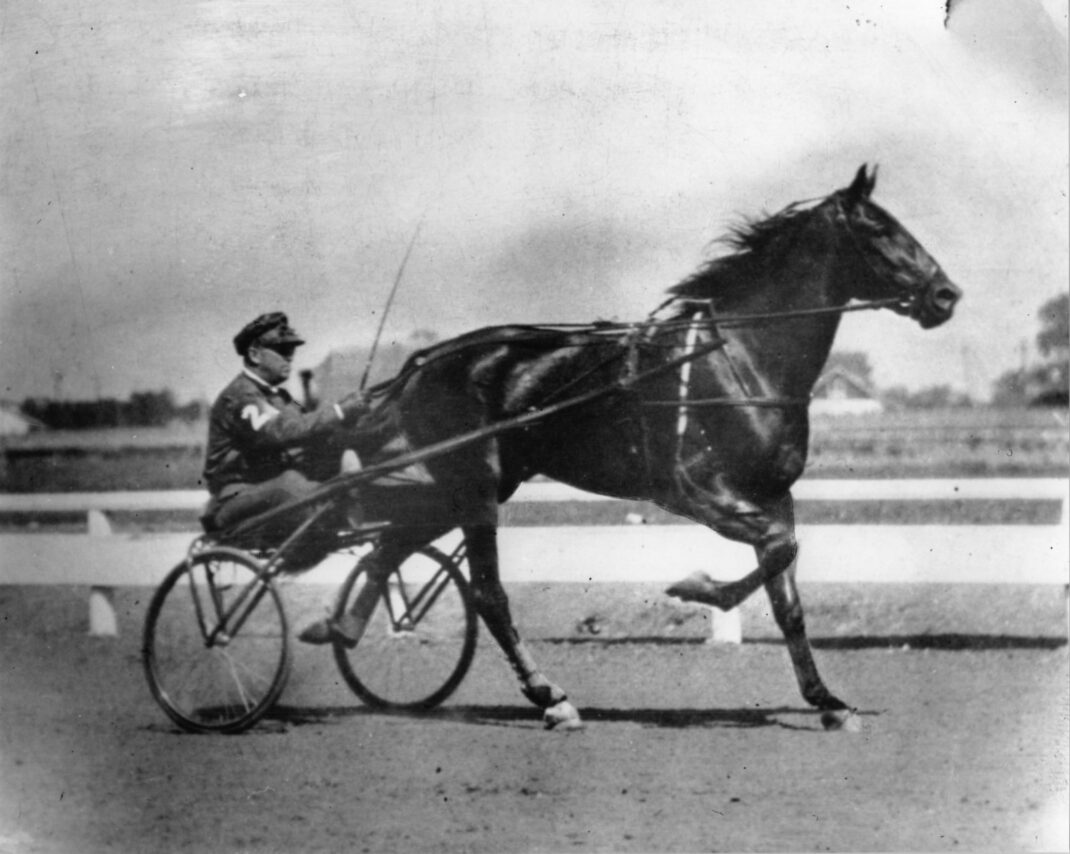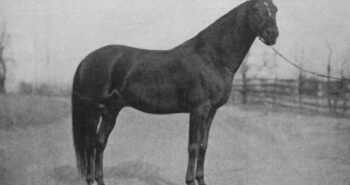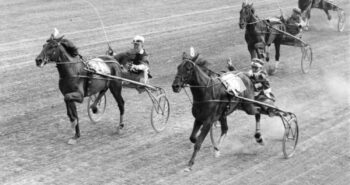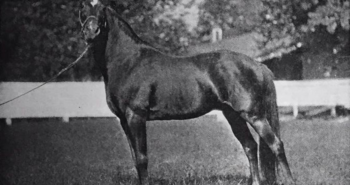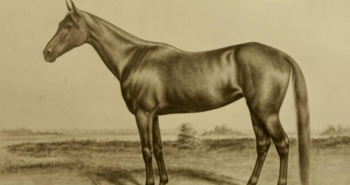Being first usually carries prestige and being the first Hambletonian winner carries a certain immortality to it. The massive $73,451.32 purse – more than five times the 1926 Kentucky Futurity purse ($14,000) – attracted 14 hopefuls to the mile track in Syracuse. While Hazleton was the pre-season favorite, Guy McKinney was not considered to have much of a chance. A new trainer turned the colt around, however and Guy McKinney went on to have a great three-year-old season.
Guy McKinney developed a critical illness shortly after his yearling purchase, but recovered and started three times as a two-year-old. Trained by Townsend Ackerman at Goshen, the horse never figured in any of those races. Owner Harry B. Rea, who had bought the Guy Axworthy son for $925 as a yearling, kept faith in the son of Guy Axworthy and made the January 1, 1926, nominating payment to the Hambletonian.
Prior to the colt’s three-year-old season, Rea moved the horse to Canadian-born trainer Nat Ray, based at North Randall, Cleveland. Nat Ray had begun his career as a jockey and steeplechase rider, but in 1911 turned to harness racing. Under the new trainer’s expert guidance Guy McKinney developed into the supreme horse of the 1923 generation. Guy McKinney came into the Hambletonian undefeated at three. The colt would proceed to win almost everything at 3, including the Kentucky Futurity, the International Stallion, the Matron and the Horse Review Stakes, amassing $68,742 in seasonal earnings – a record that was not bettered until 1949.
Sweeping the two heats
As the Hambletonian approached, Walter Chandler, heir to the Coca-Cola fortune, desperately wanted to win and offered owner Henry B Rea $40,000 for the Hambletonian favorite. Rea rejected the offer and asked for $50,000 instead. Chandler instead bought another hopeful, Bronx, for $20,000. The gamble backfired as Bronx finished out of the money in 11th place (with 12-10 finishes). The first heat in the Hambletonian was won in 2:05 1/2 (1.18,0), Guy McKinney stalking Guy Dean until the final stretch where he attacked and narrowly beat him. The second heat was won in 2:04 1/2 (1.17,4), Guy McKinney again stalking the leader, this time Charm, but finishing strongly. This time he had to hold of a strong finish from Guy Dean, who finished extremely quickly from sixth position, and held off the challenger to win by a head. The Hambletonian win netted Rea $45,815.92.
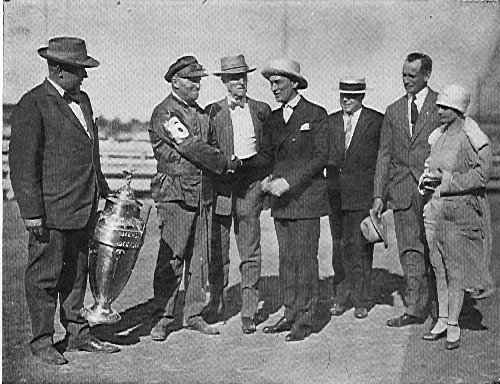
At the end of his 3-year-old season there weren’t any other rich races waiting, so in the fall of 1926 Guy McKinney was auctioned off at the Old Glory auction. The sales price was $12,000 as the colt was purchased by the newly founded Hanover Shoe Farms. They did not stand him at stud immediately, however, and instead turned him over to trainer Tom Berry. The reason was they wanted the colt to break the stallion world record, then at 1:59 1/2 (1.14,3), which would add prestige. On Thanksgiving day the following year the pair broke the world record for 4-year-olds, lowering the record to 1:58 3/4.(1.13,8) in Phoenix. After achieving that, Guy McKinney was retired to stud at Hanover Shoe Farm, and his record for four-year-olds stood until bettered by Dean Hanover in 1938.
Guy McKinney’s pedigree is particularly influenced by the legendary George Wilkes. His sire Guy Axworthy is 4×3 bred on George Wilkes through full brothers William L and Guy Wilkes. His dam Queenly McKinney is 3x(4×4) on George Wilkes through full brothers Alcyone and Alcantara – moreover his maternal great grandam Estabella is 2×2 on George Wilkes.
Disappointing at stud
At stud Guy McKinney did not achieve that much. One might expect the first Hambletonian winner to produce a winner, or at least a serious contender, of that race. However, even though many of his get were staked to the Hambletonian, only three of them even started in the big race. Best of these were Spud Hanover, who finished was seventh in the 1939 Hambletonian. His best get may appear to be Topsy Hanover, a daughter who was exported to Italy where she did quite well in the 1930s.
Despite this he found is all modern pedigrees because of Spud Hanover, who sired Florican, the damsire of Speedy Crown. His daughter Evalee Hanover was exported to the Netherlands where she bred the good Illustre Hanover, born 1941, and was the exported to Germany where she gave birth to the German Hall of Fame trotter Bibijunge. Guy McKinney is the damsire of Sharp Note, winner of the 1953 Hambletonian.
On Sep 16, 1944, The Evening Sun reported that “Guy McKinney, winner of the first Hambletonian Stake in 1926 and for many years a member of the battery of stallions at the Hanover Shoe Farms, was humanely put to death recently to save him from suffering as a result of rheumatism and infirmities of age.” Though his stud career did little to immortalize the colt, his name will always be first on the list of Hambletonian winners.
Guy McKinney
Bay colt born in Lexington, KY in 1923. Died in Hanover, PA on Sep 15, 1944.
Guy McKinney – Queenly McKinney (McKinney)
4,T1:58.4 (1.13,8)
Breeder: R.L. Nash
Owners: R.L. Nash – Harry B. Rea – Hanover Shoe Farm
Trainers: Townsend Ackerman, Nat Ray and Tom Berry
Drivers: Townsend Ackerman, Nat Ray and Tom Berry
Groom: –

